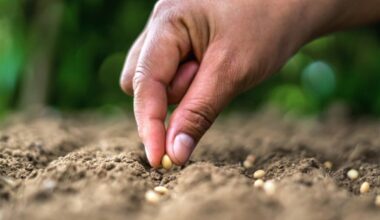Nothing is simpler and more economical than sowing a plum pit. Unintentionally, the plums that have fallen to the ground will produce a beautiful, vigorous shoot the following year, onto which you can graft the variety of your choice.
Contents
Before germinating a plum seed
To germinate an plum seed: choose it well. A question to ask yourself: what are you going to do with your peach production?
What will you do with your plum production?
One plum tree is not worth another. This is true in terms of taste, but it is also true in terms of fruit processing: jams, pies, custards, crumbles, dried fruit or in jars, etc. So many uses to think about according to your desires to better choose the plum that suits you.
In some cases as in the present case of the plum tree, to make germinate a seed to obtain a tree does not guarantee the fact of having the same tree as the one which carried the seed which you made germinate.
In arboriculture is then used the principle of the rootstock to palliate the thing, but it is there a different technique of the germination of core.
It is therefore important to understand, before germinating a plum seed, that nothing assures you to have the same fruit as the one you will have chosen. The resulting plum tree may have better fruit, worse fruit, perhaps inedible fruit, and in some cases, no fruit at all.
When to plant a plum seed?
At harvest time (summer or late summer), plant a plum pit in the ground. You will obtain a vigorous shoot, a “franc” of a different variety. To obtain an identical variety, you must graft or marcotter.
How to plant your plum seed
Once you have selected your plum seed, clean it thoroughly with clear water and a brush. This will prevent any remaining flesh from rotting or developing algae and fungus harmful to the future seedling.
Place the plum pit in a bag in the refrigerator
Pits, seeds and other seeds all have a shell surrounding them. This envelope has a protective function which reacts according to the seasons and the external conditions, allowing or not the germination of the seedling. Nature is well done, because, especially in the case of the plum, if the seedling does not pass this envelope, it is because it was too weak to survive: a true natural selection!
To “make the plum seed understand” that it will be able to germinate, it is necessary to make it pass a winter. Wrap a moistened tissue around your plum pit and place it in a plastic bag to create an ideal environment. Put it in the refrigerator while waiting for germination. You will need to wait between 70 and 90 days for the operation to be successful.
Place the sprouted core in a pot
Take an earthenware pot with a diameter of 6 inches or more and place about three centimeters of gravel at the bottom. Clay balls will also do the trick, the objective being that the water does not stagnate in the soil at the bottom of the pot.
Prepare a mixture of 2/3 sand and 1/3 potting soil and soil from your garden (the one where you plan to plant your plum tree).
Cover the gravel or clay balls with this soil up to three centimeters from the edge of your pot, place the sprouted plum seed plant upwards, pushing it slightly into the soil and finish covering, taking care to always keep the soil moist.
Now all you have to do is wait for your plum tree to grow!
How to plant your young plum tree
Once your young plum tree has arrived (with its first two leaves) and as soon as it has gained some strength, place it outside if it has not already done so (depending on the time of year when you germinate it).
Find a place for it in the sun (why not in a greenhouse), in a warm place, a little sheltered from the wind to prevent it from drying out too quickly and keep it always well humid without having water in its cup.
To make it a tree and not a bush, select a branch as its future trunk and remove the leaves as they appear. Provide it with a stake to direct its growth straight and upward.
The following fall, when the trunk reaches 12 to 16 inches in height, plant it in the ground. You will then only have to wait about 5 years to harvest the very first fruits!








